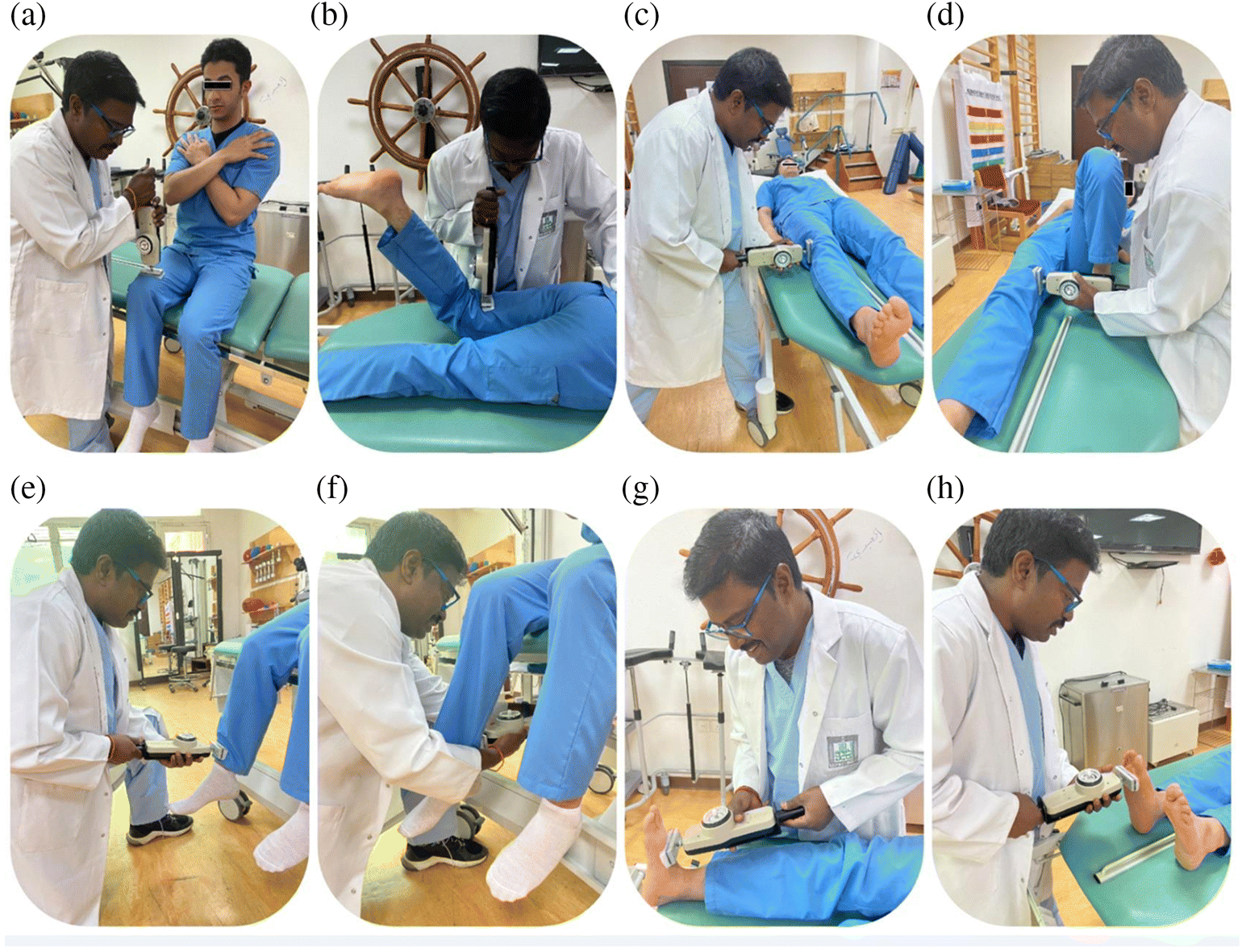The descriptive statistics for demographic characteristics, including age, height, weight, body mass index (BMI), upper limb length, lower limb length, and trunk length, as well as the balance measurements are provided in
Table 1. The normative reference values for lower extremity muscle strength, presented as means and standard deviations, minimums and maximums, and
p values for right- and left-side differences, are provided in
Table 2. In the analysis of side-to-side differences, only the hip flexors and knee extensors had statistically significant differences between the right and left sides, with
p values of 0.003 and 0.014, respectively. The correlations between muscle strength and upper extremity length, trunk length, lower extremity length, height, weight, BMI, age, and balance were calculated. Of all the variables, weight, BMI, forward reach distance, and oblique reach distance had positive correlations with strength. Weight had a moderate correlation with left hip flexors and right and left knee extensors, with correlation
r values (
p values) of 0.40 (0.03), 0.526 (< 0.001), and 0.579 (< 0.001), respectively. In contrast, weight had a weak correlation with left hip abductors, with a correlation
r value (
p value) of 0.362 (0.05). Similarly, BMI had a moderate correlation with left hip flexors, abductors, and right and left knee extensors, with correlation
r values (
p values) of 0.440 (0.02), 0.415 (0.02), 0.536 (< 0.001), and 0.602 (< 0.001), respectively. The details are provided in
Table 3.
Balance as tested by forward reach, lateral reach, and oblique reach distances showed some interesting findings. No muscle strength values were correlated with forward reach distance, whereas lateral reach and oblique reach demonstrated some moderate correlations with strength. Lateral reach had a moderate correlation with right and left knee extensors and right ankle dorsiflexors, with correlation r values (p values) of 0.451 (0.01), 0.512 (< 0.001), and 0.504 (< 0.001), respectively. Lateral reach had a weak correlation with left ankle dorsiflexors, with a correlation r value (p value) of 0.379 (0.04). Oblique reach had a moderate correlation with right and left knee extensors and right ankle dorsiflexors, with correlation r values (p values) of 0.451 (0.01), 0.512 (< 0.001), and 0.504 (< 0.001), respectively.


